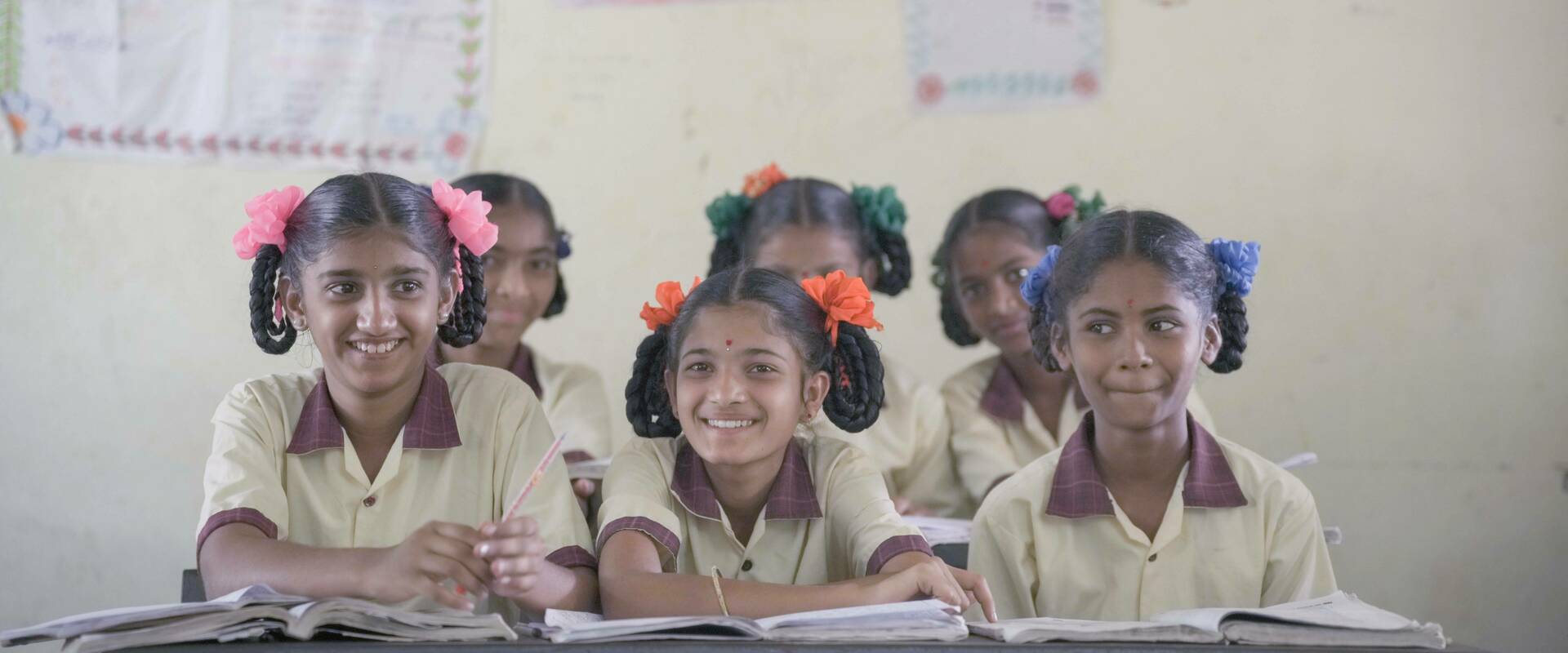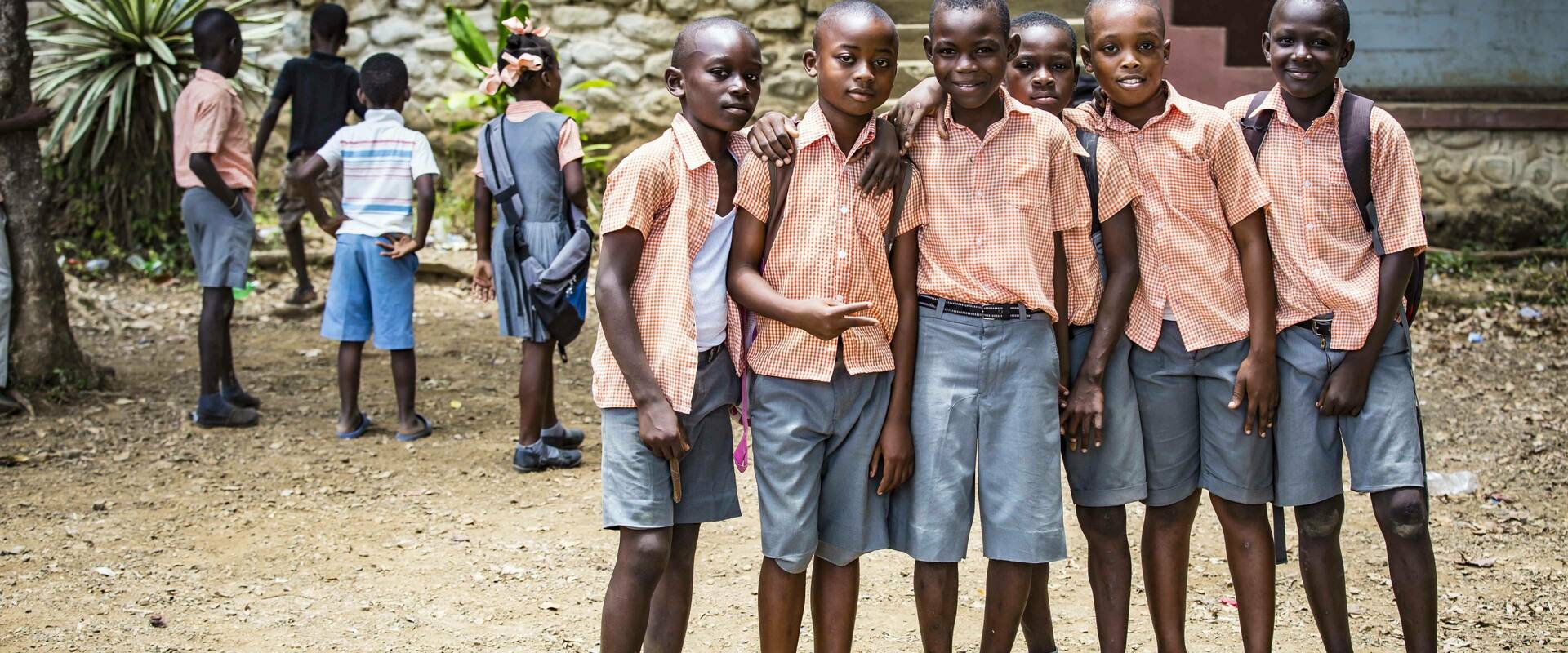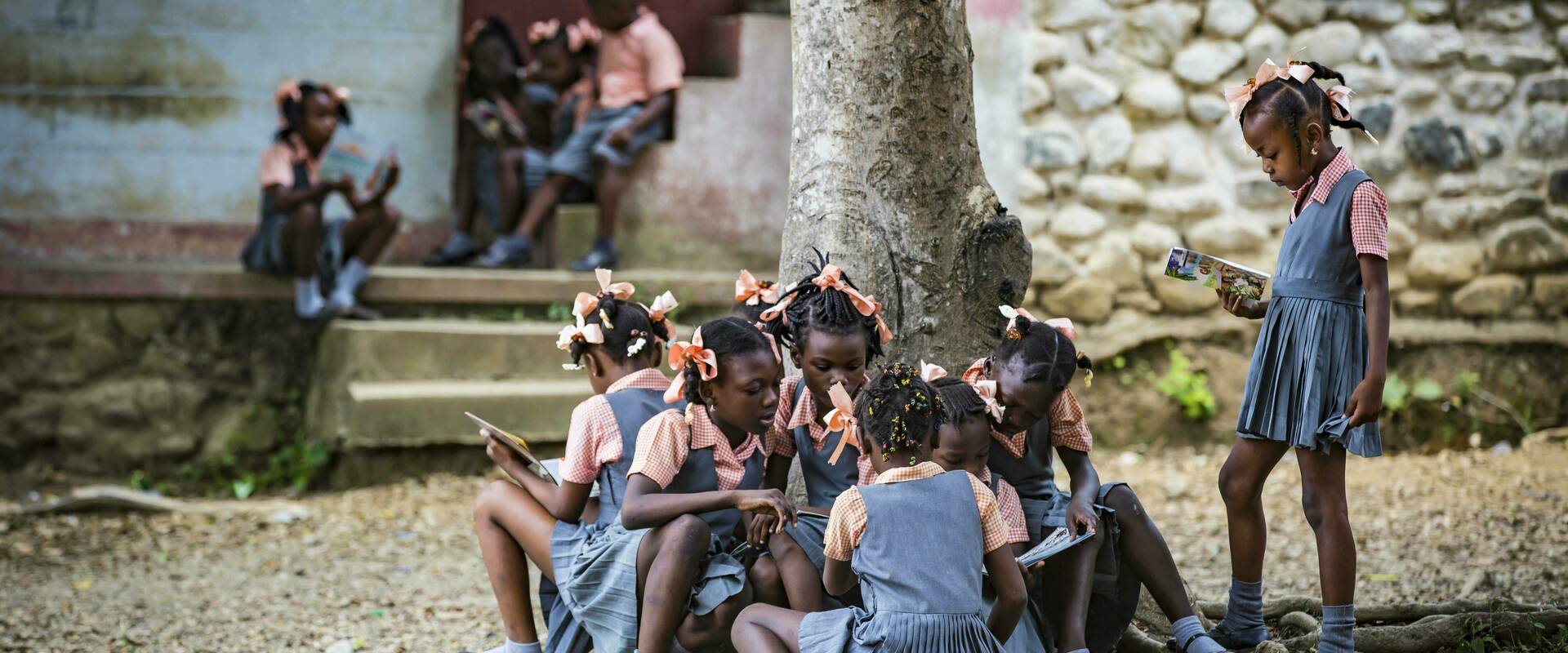Using intervention science, Notre Dame researchers are creating proven pathways out of adversity for the world’s most vulnerable children
This story was originally published by Brett Beasley from Notre Dame Research. Click here to view the original story.
Neil Boothby has observed some of the most tragic events of the last 40 years, including war, genocide, and natural disasters. He has seen them not as an eyewitness but through the eyes of the children whose lives they have affected.
Boothby, a child psychologist, began studying children’s reactions to adversity in the 1980s when, as a graduate student, he traveled to Cambodia to conduct fieldwork. He was struck by the experiences of children who had been traumatized by the Cambodian genocide, during which the Khmer Rouge government had murdered a quarter of the country’s population. Most of the children were orphaned by the genocide. Many had witnessed atrocities. Some had even been forced to participate in the violence themselves as child soldiers.
Boothby was disturbed not just by the challenges these children faced but also by the uncertainty of the groups—government agencies, humanitarian organizations, and local communities—attempting to help them. Each group was armed with good intentions to help these children forge healthy relationships, find direction, and grow into thriving adults. But as they acted, most followed their intuitions rather than evidence.
“At the time, there was no established science of what a pathway out of adversity looked like,” Boothby explains, “And there was little to no data to support one set of practices over another for helping children find it.”
Boothby wanted to illuminate the path. So he forged connections with the children and tracked their progress. Boothby soon had other opportunities to work with children facing adversity—including 100 boys ages six to 16 who had been forced to be soldiers in the East African nation of Mozambique.
Boothby remains in contact with many of these children today, and he says that while many of their stories had harrowing beginnings, they can also provide hope.
“Violence does not always or inevitably beget violence,” Boothby says. He says that instead of perpetuating a cycle of violence, many adults who experienced adversity as children become kind and even altruistic, especially when they go on to become parents themselves. “They say, ‘I didn't get this as a child, and I want to make sure my son or daughter has it,’” Boothby explains.
"It is similar to the way a pearl is formed,” he says. “It starts off as sand and an irritant in a clam, and there's a reaction around that and whatnot, but it eventually comes out as something of high value. I've seen that in some of these children that have gone through a crisis."

Developing a Research-to-Learning Cycle
Boothby would go on to win several awards for his work with child soldiers, including the Red Cross International Humanitarian of the Year Award and the United Nations’ Golden Achievement Award for Social Services. The publications that resulted from his studies in Cambodia, Mozambique, and other countries would help create a new methodology in development known as “intervention science.” Boothby would refine his approach as a faculty member at Duke University and later at Columbia University while working with organizations such as the United Nations International Children's Emergency Fund (UNICEF), the United States Agency for International Development (USAID), and Save the Children.
In 2019, Boothby joined the University of Notre Dame as the founding director of the Global Center for the Development of the Whole Child (GC-DWC). The GC-DWC is housed within the University’s Institute for Educational Initiatives and integrates implementation science into all of its work. The GC-DWC manages one of the fastest-growing research portfolios on campus, with $70 million in external research funding to support development programs in 25 countries that reach more than 500,000 children annually.
Some of the children the GC-DWC works with have experienced violent and traumatic events like the children Boothby worked with in Cambodia and Mozambique. Some have been affected by natural disasters, and some are members of marginalized groups. The common underlying source of adversity that underlies all of the others, however, is poverty.
What distinguishes the GC-DWC’s approach from other approaches to studying poverty, Boothby says, is how it integrates research and practice—learning and doing—on purpose and from the beginning.
“Poverty is extremely complex,” Boothby explains, “and it interacts with and exacerbates other kinds of adversity. To make a difference in alleviating it, you have to think beyond one-off research projects.” Applauding the University’s recent launch of the Notre Dame Poverty Initiative, Boothby says the GC-DWC’s experience with intervention science can play a key role in the larger, University-wide effort to fight poverty.
“Often as a researcher, it is tempting to engage in a kind of academic tourism,” Boothby says. “Researchers might want to stop and be satisfied when they have defined a problem or developed a solution. But for us, the cycle doesn’t stop when a program is delivered. In fact, it is just the beginning of a new process of research, learning, and refinement.”
The team’s recent publications share with scholars what they have learned about reading programs, play-based learning, teacher well-being, parents’ role in social and emotional learning, and many other topics.
To ensure their findings have an impact beyond academia, the GC-DWC develops and disseminates free tools and guides for schools, teachers, and parents. During the COVID-19 pandemic, the GC-DWC partnered with several other organizations to use radio programs to provide distance learning suitable for Haiti’s low-tech environment. The partnership resulted in a literacy program, a reading hour program, and a pre-K social and emotional learning program.

The Power of Staying Put
The GC-DWC’s approaches to helping children in crisis tend to have similar core elements.
“We think a lot in terms of ‘education plus,’” Boothby says. “We often work with schools, and education is always necessary but never sufficient. So we think about what support children get at home or at their places of worship and what nutrition they receive, and then we build extra support around education.”
Still, Boothby admits, “To some extent, we're always experimenting.” What works for a child in the context of the Catholic parish system in Haiti may not work for a child who is a member of the Dalit minority at one of the residential schools the GC-DWC works with in India.
All of this experimentation means, as Boothby puts it, “we are in it for the long haul.” The GC-DWC works iteratively and maintains longitudinal data to show long-term progress.
Their commitment to staying put allows GC-DWC researchers not only to build and maintain relationships; it transforms the way they approach knowledge itself.
“We draw upon neuroscience, health research, and work on social-emotional learning, and we conduct broad efficacy studies, qualitative studies, and even randomized controlled trials,” Boothby says, “but we also pair that knowledge with knowledge that comes from within the communities where we work.”
Boothby says this approach fosters a more respectful attitude toward communities participating in research. “Rather than seeing participants as people who need our help, we see participants as partners who also invest a lot and have a lot to contribute to what we are learning,” he says.

Incubate. Implement. Improve.
Nikhit D'Sa, assistant professor and director for research at the GC-DWC, says that a significant benefit of the GC-DWC’s approach to intervention science is that it allows for rapid, iterative improvements.
“The iterative approach frees us from having to ‘solve’ a problem. Instead, it encourages us to incubate an idea with community partners and, after launching it, test out the components of it to see what is working. Then we can invest in what works and gradually develop its depth and scale.”
“At the start of the COVID-19 pandemic,” he explains, “we heard from mothers in the north of Haiti about their need for community. They felt very isolated. We ended up establishing what we call the Mothers’ Empowerment Initiative. It centered around phone calls. We called each week just to see how they were doing, to offer some conversation and connection."
To see if the program was effective, researchers at the GC-DWC compared survey data two months in with survey data collected before it began. Much to their surprise, they found the intervention was not working as expected: mothers’ levels of stress were going up rather than coming down.
“We went back and interviewed the mothers,” D’Sa says, “And we found that they enjoyed the relational component of phone calls, but that wasn’t enough. They wanted more connection. We heard mothers saying, ‘We need more resources in our community. I talk about problems, but I don't have anywhere to go after that.’”
“Those conversations led us to create a parent ambassador program and a broader parent training initiative. We used it first in five communities in the north of Haiti. Then we improved it, and used it in 12 other communities in the south of Haiti. And now we have used what we have learned from these two rounds of implementation to deepen the content, improve the approach, and are using it in 15 different communities in the north” D’Sa says. “That's the iterative change process we work on. And we are trying to do it in a way that respects the communities that we work with and is also rapid enough for us to be flexible and make necessary changes. We have academic rigor to our work. We understand the science behind what might work. And we pair that with knowledge that comes from within the communities. This combination allows us to develop evidence-based approaches that are contextually appropriate”
Seeing the Whole Child
Last year, Boothby co-wrote Invest in Our Youth with Holy Cross priest Fr. Lou DelFra, C.S.C.. The book shares insights on child development and connects them to theology, particularly Catholic Social Teaching. Through the book, Boothby and DelFra aim to equip parents and others to draw on both their faith and on science-backed practices during the first 1,000 days of a child’s life.
“Faith is an anchor point for parents raising kids in a Christian context,” Boothby says. “It can be very powerful to connect science to faith to help parents and others find ways to make it actionable.” In Haiti, for example, the GC-DWC works with local parish priests to integrate early childhood education materials into baptismal training.
Combining faith with science in this way is emblematic of the approach the GC-DWC takes worldwide.
“To create lasting change, you have to think about multiple levels at once.” He provides an example: improving a child’s work in school.
“You can’t talk about improving academic performance without discussing how parents parent and how teachers teach. And those are both affected by the priests and parishes that serve the families and provide education. And all are affected by changes in policy by the government of the country. You have to look at the whole picture,” he says.
For Boothby, Notre Dame provides an ideal vantage point for understanding and shaping that picture. “Notre Dame is at the nexus between academic rigor, service, and partnership,” he says, “That means researchers here are uniquely well positioned to close the gap between learning and doing. Intervention science is one of the best ways to bring the University to help the world solve big problems. We have the opportunity—and the responsibility—to show what it looks like to do it well.”
Contact
Brett Beasley / Writer and Editorial Program Manager
Notre Dame Research / University of Notre Dame
bbeasle1@nd.edu / +1 574-631-8183
research.nd.edu / @UNDResearch

